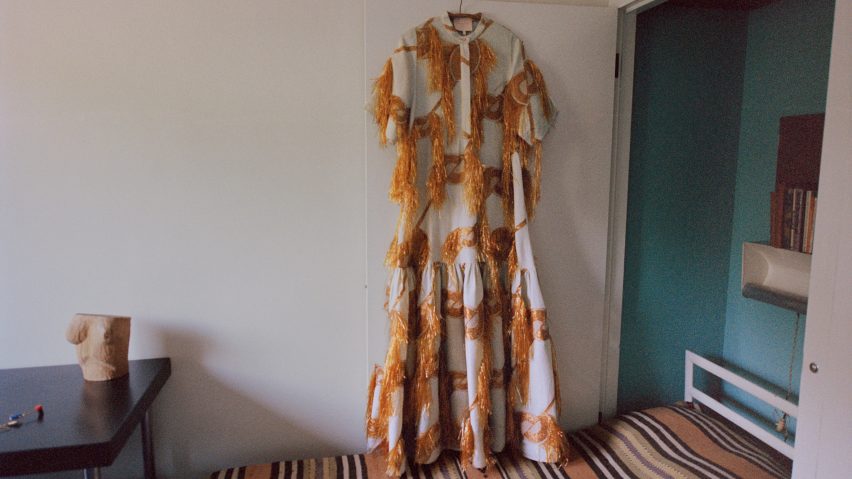
Six female designers create responses to artworks in Ernö Goldfinger's former home
Ilse Crawford, Gitta Gschwendtner and Roksanda Ilinčić are among six female designers that have created artworks for an exhibition at 2 Willow Road, the London house that belonged to architect Ernö Goldfinger.
Objects designed by Lyn Harris, Nina Chakrabarti and Kitty Travers, as well as Crawford, Gschwendtner and Ilinčić, are on display at 2 Willow Road in Hampstead until 4 November for the exhibition Ahead of the Curve.
These new artworks were created in response to works by six female artists in the collection of Hungarian-born Goldfinger and his wife Ursula, who designed and built the property in the 1930s, and lived in it until 1987.
They include a felt lamp, an ice-cream cake, an extremely long glove, a fringed dress, a record cover and a smokey scent.
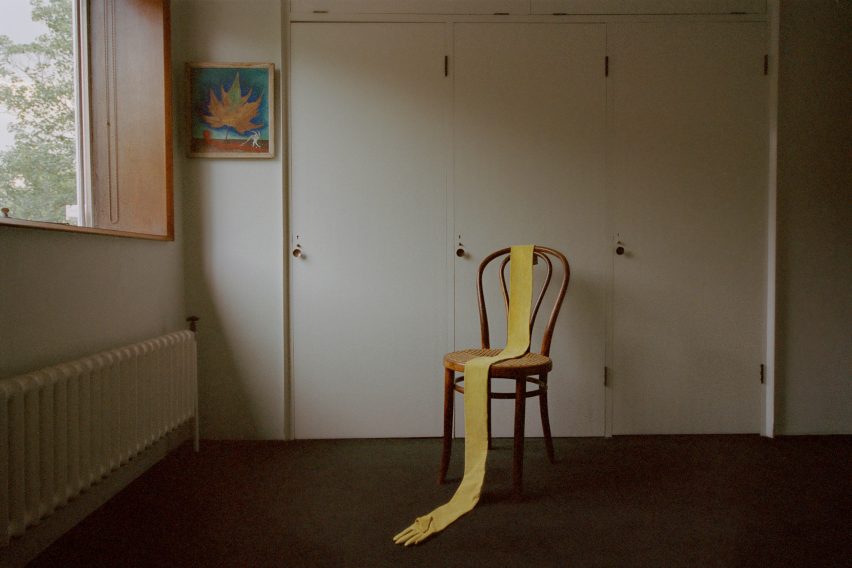
Built as one of three terraced houses, 2 Willow Road was the first modern property acquired by the National Trust, who opened it to the public in 1996. The interior is filled with modern art – particularly surrealist works – collected over the years by the Goldfingers, as well as bespoke furniture designed by Ernö.
For Ahead of the Curve, curator Frith Kerr has arranged the new objects in dialogue with their corresponding artworks and alongside a short written statement. These captions are presented as printed invitation cards placed nearby, so that it looks as if owners Ernö or Ursula had left them.
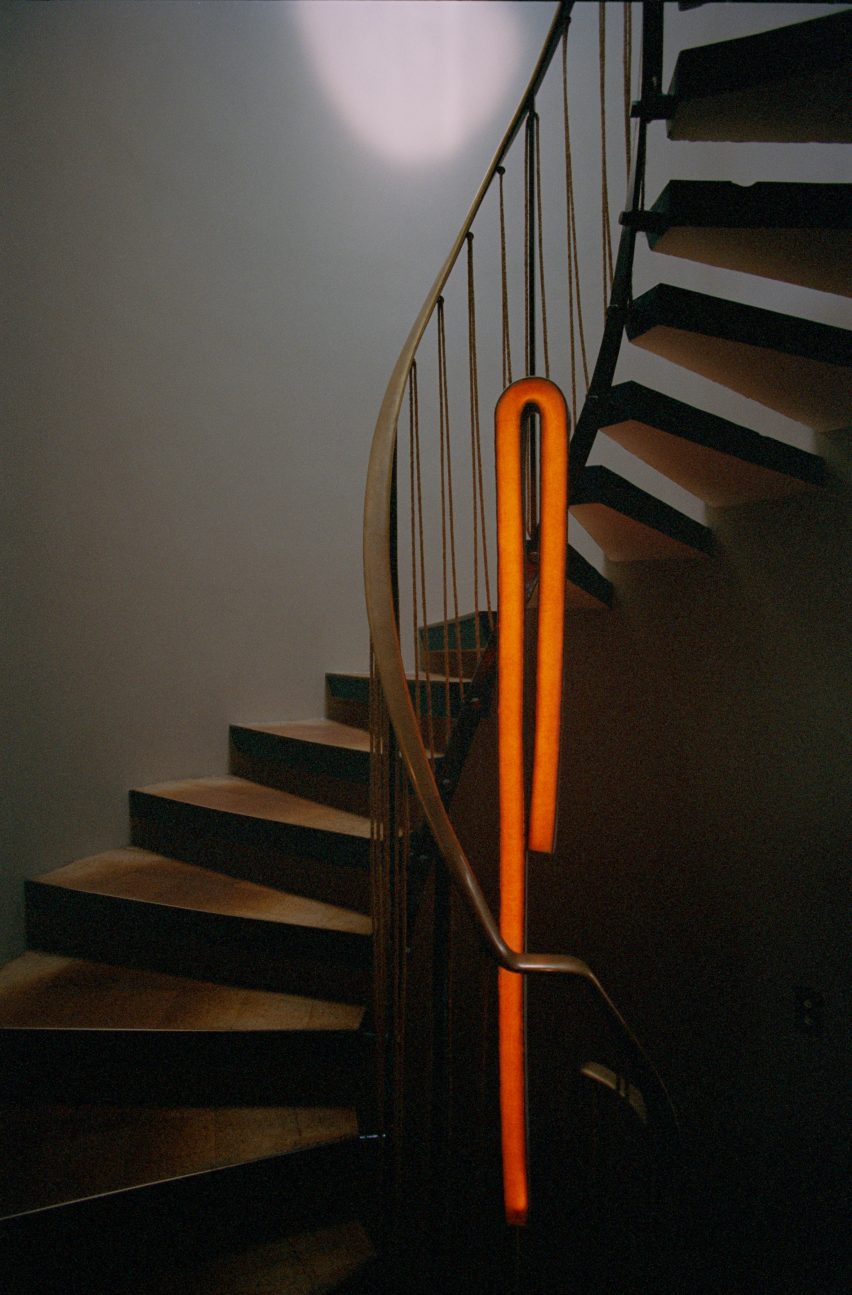
Kerr told Dezeen: "We were approached by the National Trust with an open brief to highlight the work of the women artists in the Goldfingers' collection as part of their "Women and Power" National Programme – a nationwide initiative responding to the centenary of women first achieving the vote in a British Parliamentary election."
"Ernö and Ursula's collection, we discovered, really was a product of the intellectual and artistic social circle they entertained at their home, 2 Willow Road," she continued. "So we decided to make those conversations come alive by inviting six designers to respond to an artist each."
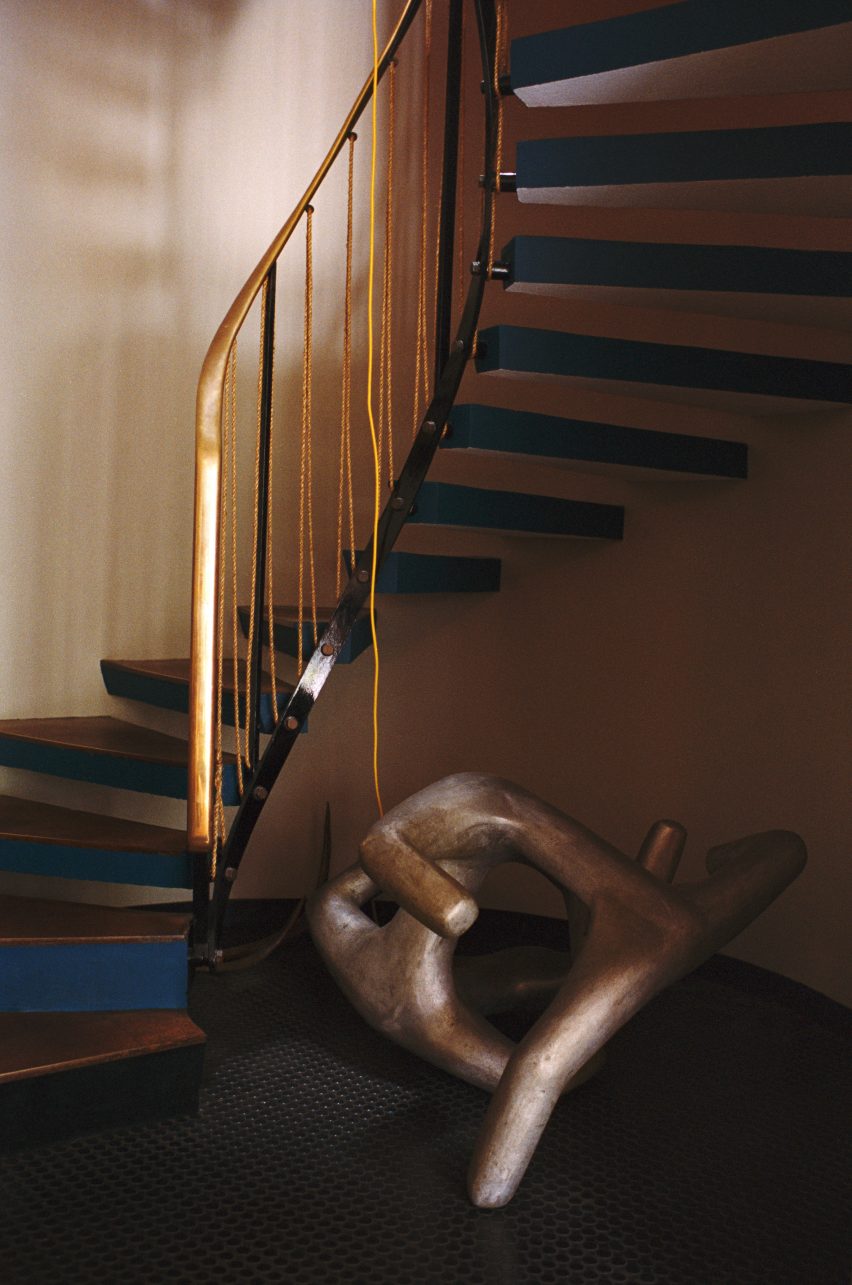
Designer Gitta Gschwendtner has created a felt suspension lamp in the stairwell above a sculpture by American sculptor, printmaker, and graphic artist Helen Phillips.
"The starting point is the fact that Phillips' sculpture was originally suspended in the Whitechapel exhibition This is Tomorrow," said Gschwendtner. "I wanted to make something that was functional, highlighting the staircase and it's rather amazing hollow core, so I have suspended a soft felt lamp to light the glorious stairwell space above the sculpture."
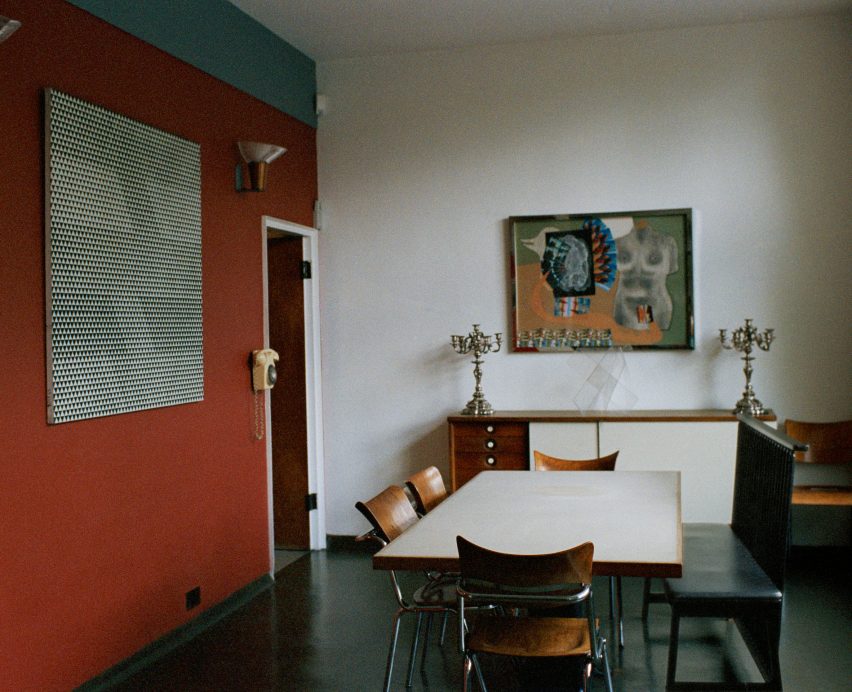
A painting by British artist Bridget Riley inspired a bench by London designer Ilse Crawford.
Crawford said: "I am fascinated by how Riley talks about her work as ultimately a social act, completed by the viewer. Our approach is similar. We are interested in the relationship between design and the user. Our projects are conceived to enhance human behaviour. This bench is designed to bring people together."
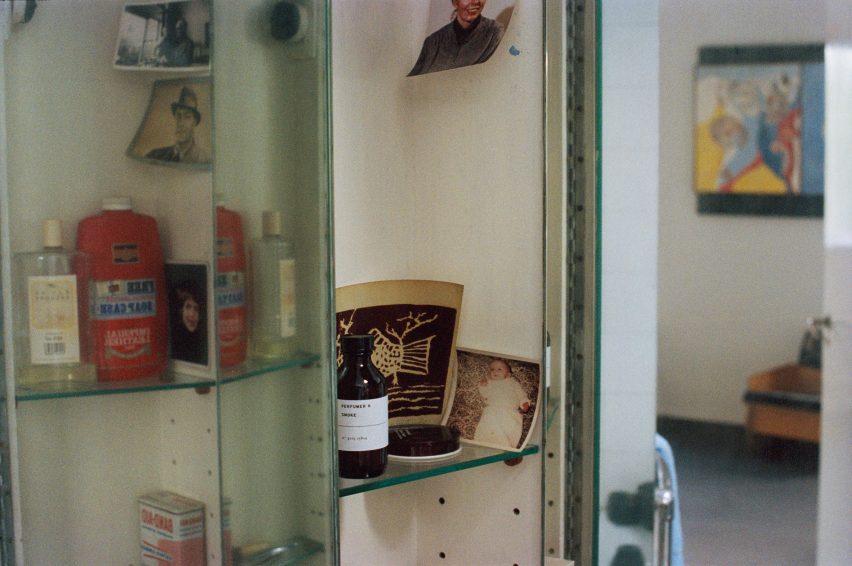
Perfumer Lyn Harris created a smokey scent to go with the painting Industrial View by British painter Prunella Clough.
"I love the synergy of Prunella's painting evoking a mood of a smoke-filled sky and the space it sits in being filled with Goldfinger's cigar smoke," said Harris, who runs her own brand, Perfumer H.
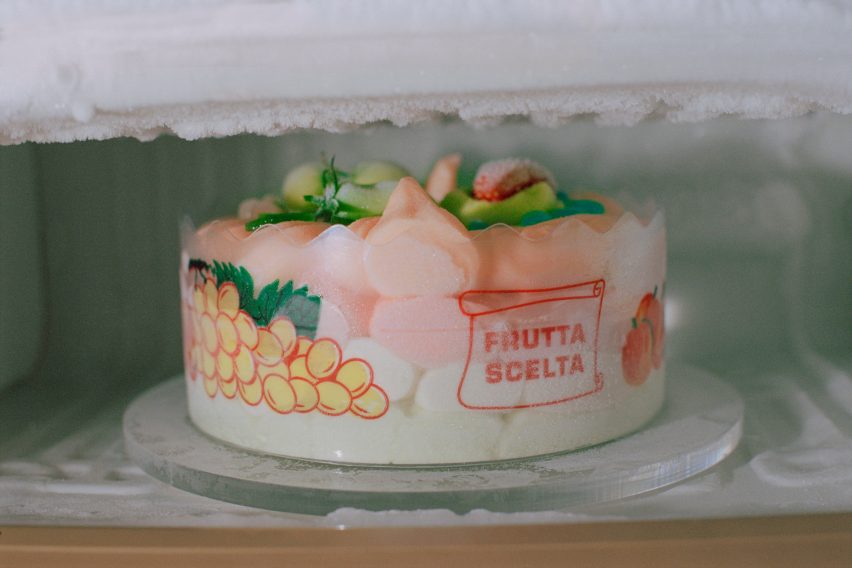
Ice cream confectioner Kitty Travers – who is the founder of La Grotta Ices, a small ice-cream manufactory that makes inventive ices in a former Victorian greengrocer's shop in southeast London – has created an ice-cream cake inspired by the work of American photographer Lee Miller. The photographs on display capture Miller's friends in her Sussex garden.
"I felt moved by Miller's longing to create, and to touch beauty," said Travers. "The unabashed flavours of this ice cream cake – of pea pods and parsley, blackcurrant leaves and green gooseberries – should smell like her garden in Muddles Green."
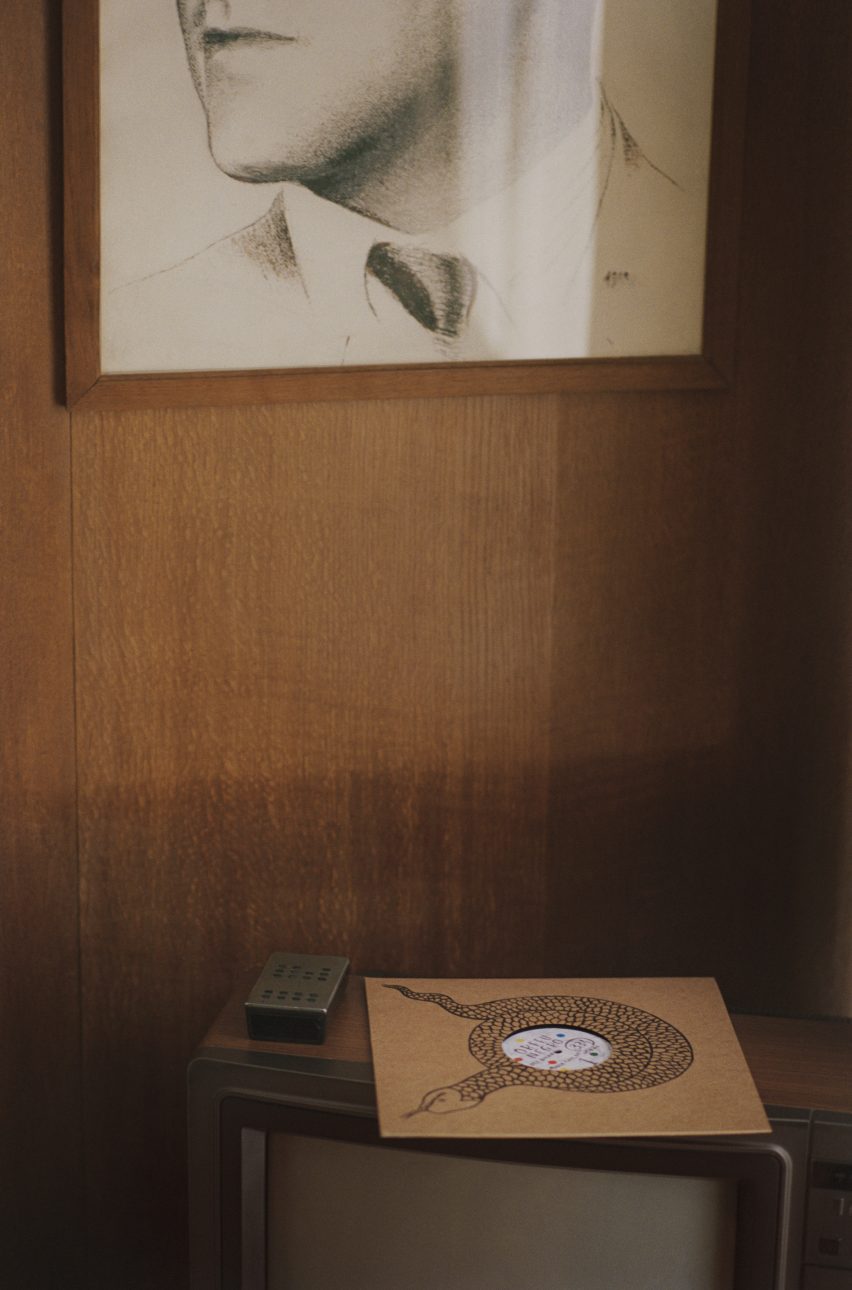
Illustrator Nina Chakrabarti, who is known for her distinctive line work and children's books, was paired with surrealist painter and photographer Eileen Agar. In response to Agar's 1938 portrait of Ernö Goldfinger, which hangs in the house, Chakrabarti created a record cover for the film soundtrack Orfeu Negro.
"On her travels from Argentina to England as a child, Eileen Agar's mother sent with her a cow and an orchestra insisting she would need fresh milk and good music for her wellbeing," explained Chakrabarti.
"In celebration of Eileen Agar's exuberant, fearless and creative life I have chosen the joyful, cacophonous film soundtrack, Orfeu Negro."
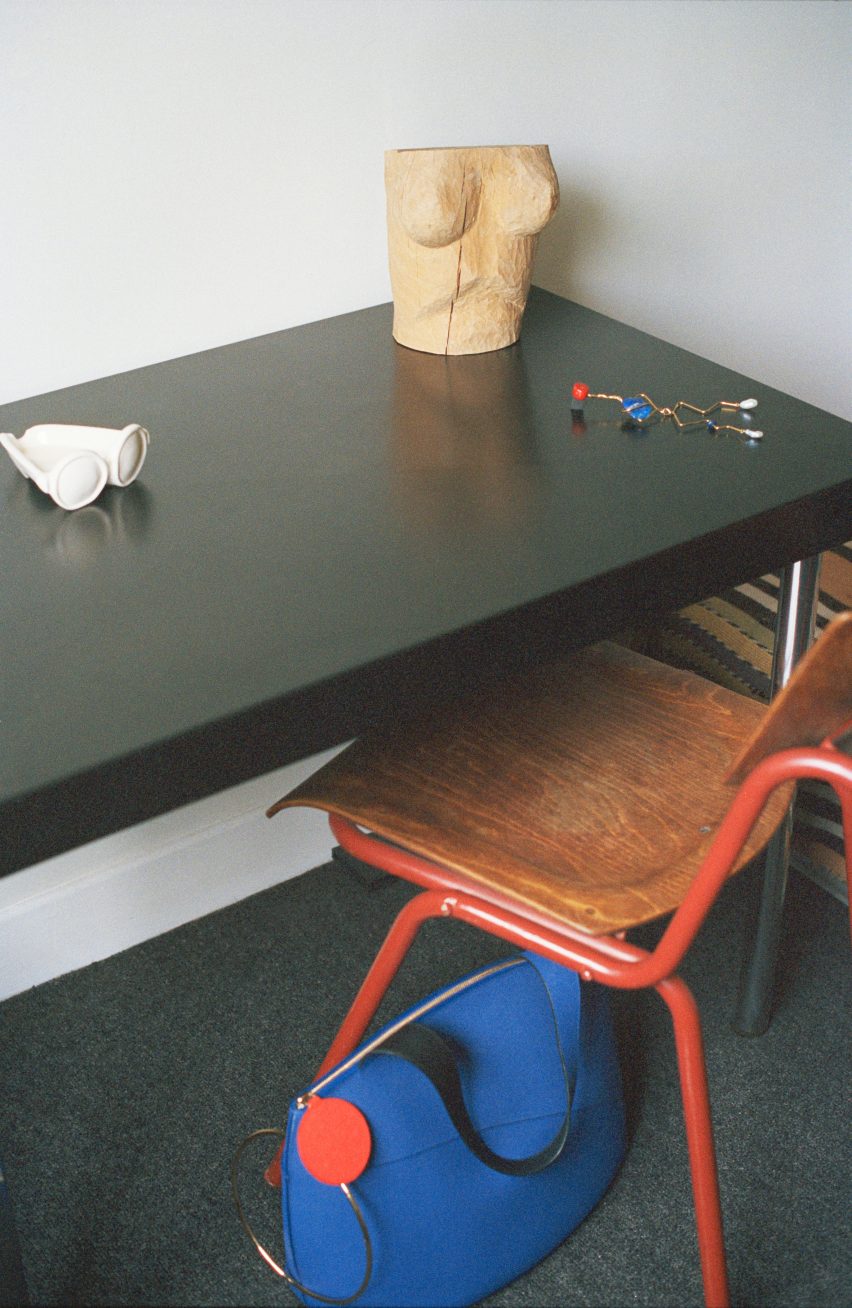
Fashion designer Roksanda Ilinčić created a dress with orange fringe details, in response to the mood of the house. She also produced a bright blue bag and keyring, which are paired with a painting of two ears by Ursula Goldfinger.
"The ears are a listening device," Ilinčić remarked. "They inhabit this room as if to listen to the stories of the guests who have stayed; adventures, secrets, conversations in the room."
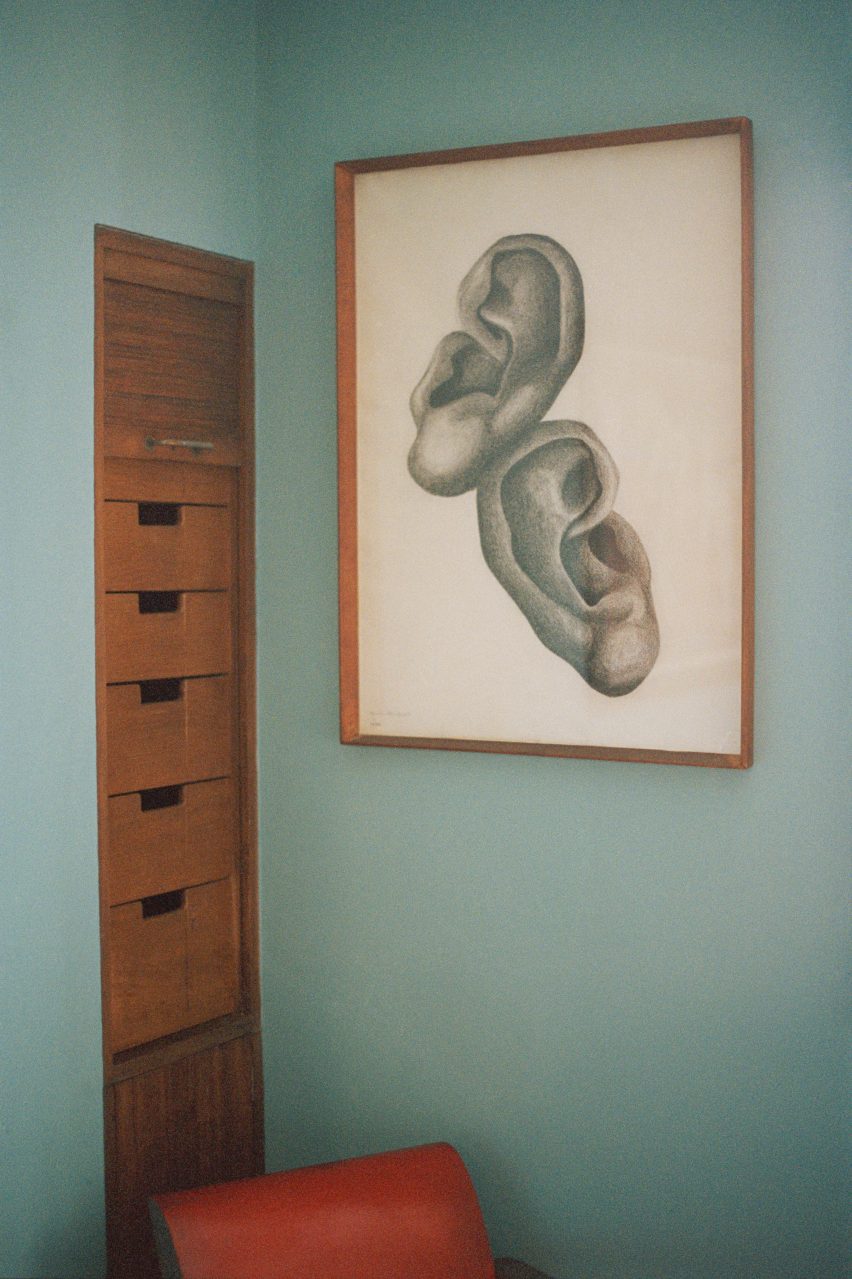
The exhibition's curator Frith Kerr also contributed to the show. She created the Long Hand glove and the Good Night Rita duvet cover, in response to paintings by Danish surrealist Rita Kernn-Larsen.
"As Ursula and Ernö lay in bed they would say "Goodnight Rita" to the painting that hung on the wall in front of them, or so I imagined," said Kerr.
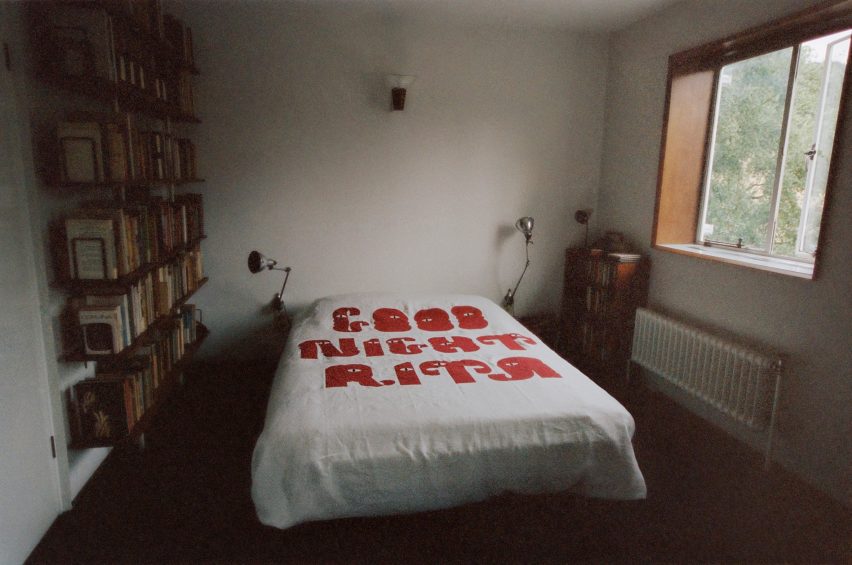
Kerr, founder of Studio Frith, has previously produced work for some of the world's leading cultural institutions, brands and artists, including Frieze Art Fairs, Guggenheim New York and Philippe Parreno.
She hopes this exhibition will shine a light on the work of women artists in the Goldfingers' collection – but is adamant that the pieces themselves shouldn't be judged any differently to those of male artists.
"Would these responses be different from a man? Every artist or designer would respond differently, irrespective of gender," she said. "Whereas it is important to shine a light on the work of the female artists in the collection, the work itself should not be viewed through that lens."